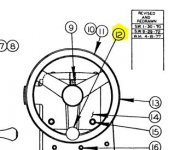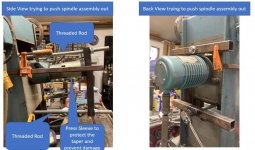nburilov
Plastic
- Joined
- Apr 24, 2022
- Location
- South Dakota, USA
I recently dove into a new project... acquired a 1965 DoAll DH-612 Manual Surface Grinder. Plan is to completely disassemble and restore to factory or better performance.
First of probably a few questions:
I am planning to re-chrome the hand wheels. During disassembly I see the vertical hand wheel does not have a shoulder bolt that inserts through the handle like the other two wheels. It also does not have a gap between the handle and the wheel with some flats to unscrew the wheel from the handle. I am wondering if the handle was pressed into the wheel and not threaded. Can anyone confirm what type of connection this is and have thoughts on how to dis-assemble?

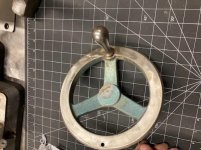
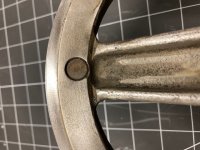
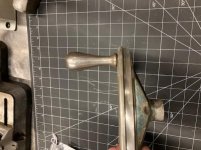
First of probably a few questions:
I am planning to re-chrome the hand wheels. During disassembly I see the vertical hand wheel does not have a shoulder bolt that inserts through the handle like the other two wheels. It also does not have a gap between the handle and the wheel with some flats to unscrew the wheel from the handle. I am wondering if the handle was pressed into the wheel and not threaded. Can anyone confirm what type of connection this is and have thoughts on how to dis-assemble?






